Learning to evaluate bonsai is a big part of the Bay Island Bonsai experience. If one doesn’t understand a tree’s good and bad points, it’s hard to improve the tree, and it’s hard to know how much to pay for it.
We’ve been using a simple form designed by Boon for over 10 years. The idea is that it’s easier to evaluate part of a tree than it is to synthesize all of a tree’s good and bad points into a single measure. At our recent May meeting, we looked closely at two trees: a Tsukumo cypress and a Japanese black pine.
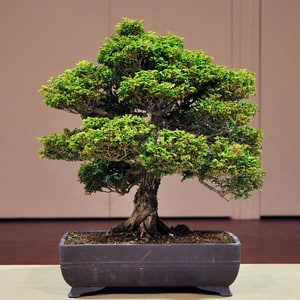
Tree #1 – Tsukumo cypress
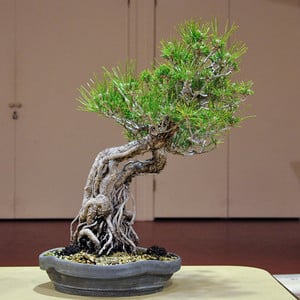
Tree #2 – Japanese black pine – exposed root style
At a glance, the Tsukumo cypress is the more impressive tree. It is full, healthy, and has a nice silhouette. The pine looks like it has a way to go before we’ll see it in our exhibit. The judging, however, tells a different story. I’ll save you the math and provide averages for the forms that appear below.
Tree #1 – Tsukumo cypress
Trunk 5
Branches 3
Rootage 3
Pot Selection 3
Aesthetics 3
Total 17
Tree #2 – Japanese black pine
Trunk 8
Branches 3
Rootage 4
Pot Selection 4
Aesthetics 3
Total 22
After marking our forms, we reconvene and publicly discuss the results. The corrections on several of the cards below reflect the broader consensus.
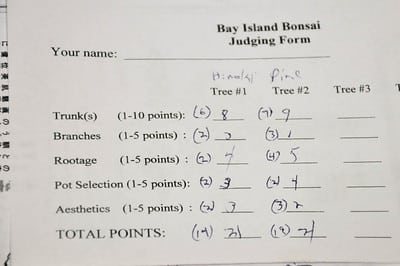
Judging form
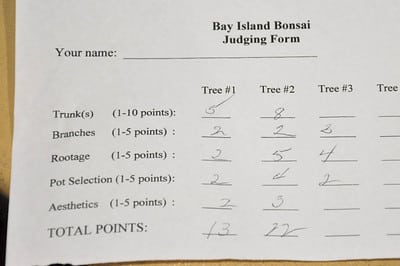
Judging form
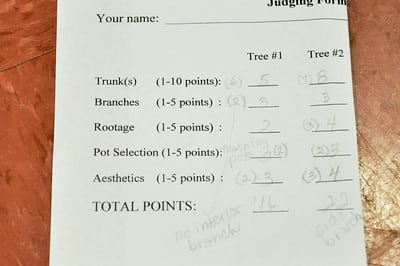
Judging form
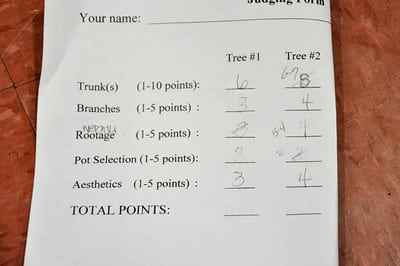
Judging form
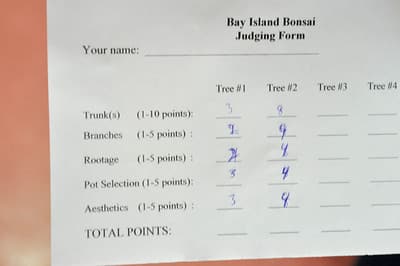
Judging form
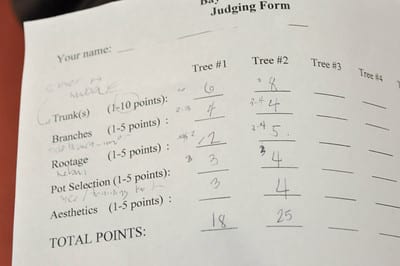
Judging form
New members often have trouble with this atomized approach to evaluating trees. Over time, however, member scores tend to move toward the mean. These evaluation exercices prepare us for our annual exhibit. At the exhibit, members select the best tree in each class. Winning trees receive Members’ Choice Awards. More importantly, the skills we gain from learning to evaluate bonsai help us guide our own trees toward exhibit.
A complementary exercise at BIB meetings involves creating practice displays and bringing trees to share with others in the hopes that we can together determine whether or not a tree is ready for exhibit.
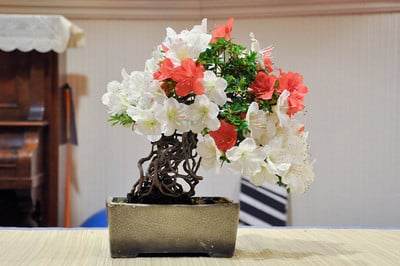
Satsuki azalea
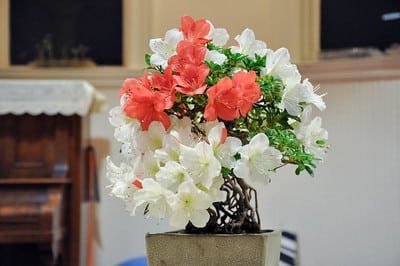
Satsuki azalea blooms
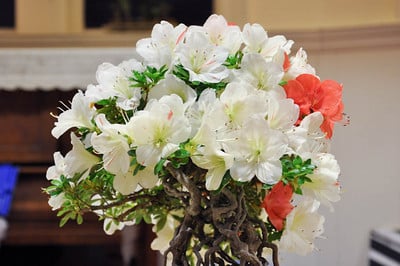
Satsuki azalea blooms
This azalea is planted in what the Japanese often refer to as a “white” pot. Age has darkened the pot to the point that it evokes grey now more than white. It’s a beautiful pot that suits the azalea well.
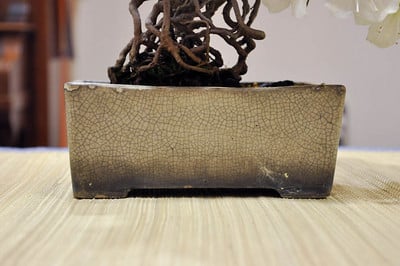
“White” pot
We were also treated to an attractive hinoki bonsai. I’ve been partial to hinoki bonsai for years. They have wonderfully dark green foliage and their well-composed branch pads can reveal age well.
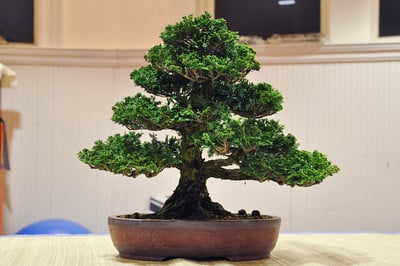
Hinoki cypress
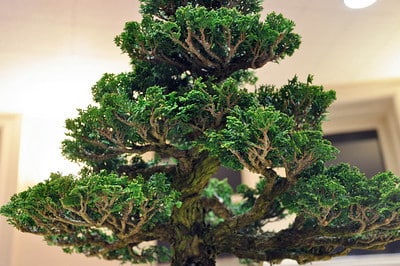
Hinoki cypress – branch pad detail
I’m still unsure about which of my own trees will make it to exhibit this year. I’m hoping I’ll have a better idea by the end of summer. If I had to decide today – well, it would be a hard decision.
Subscribe to Bonsai Tonight
New Posts Delivered Every Tuesday and Friday
Juan says
Hi Jonas,
Your blog is very nice and I’m learning a lot reading it!
Congratulations and best regards from Barcelona,
Juan
Alex V says
Hi Jonas,
Having played this game before, I immediately grabbed a form and judged the trees before looking at the overall results. It might be fun and informative to go through in a later post and for each category, discuss why you thought the tree deserved that score. What was it about the Hinoki’s trunk that gave it a lowly 5? That sort of thing.
Thanks for posting this, it reminds me I have to do this for all my own trees again this year.
Alex V
xwires says
Hi Alex – here are a few comments about the tsukumo cypress that came up during the discussion at the meeting: